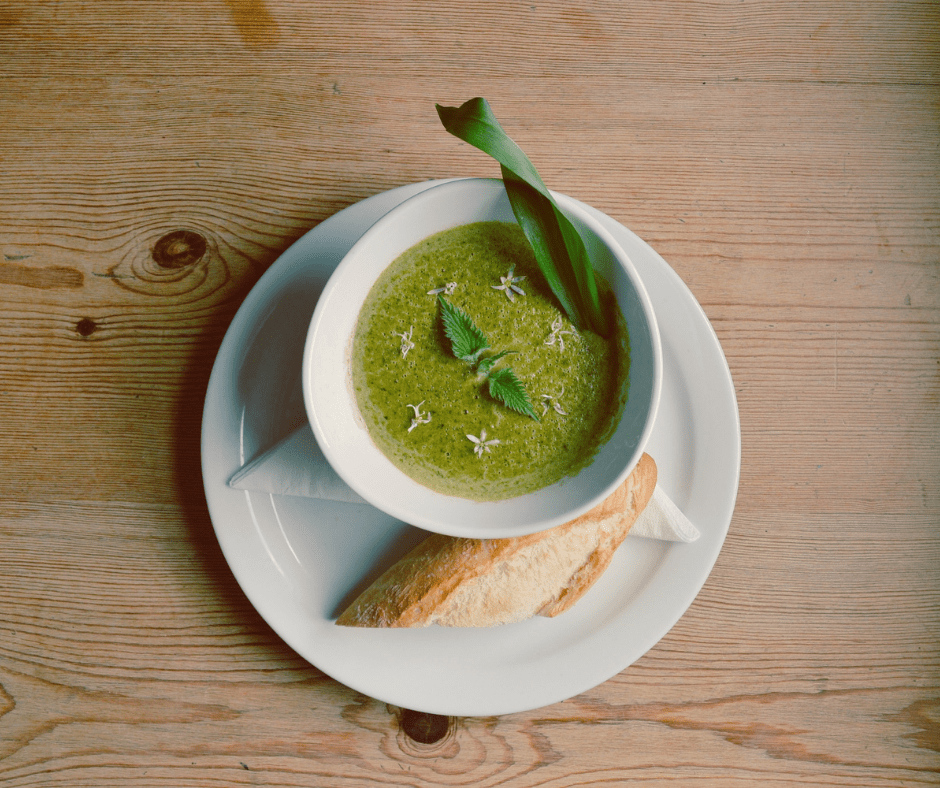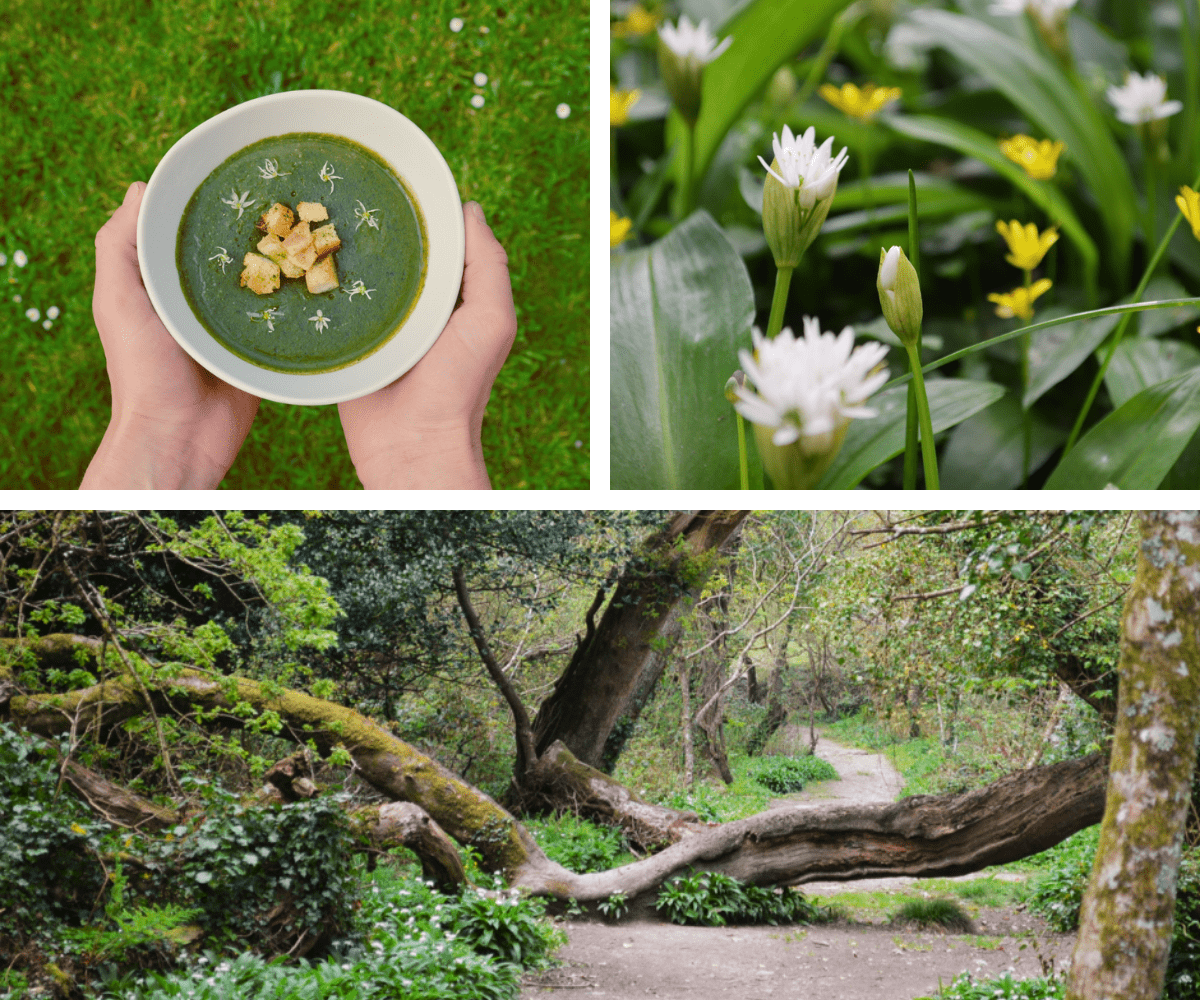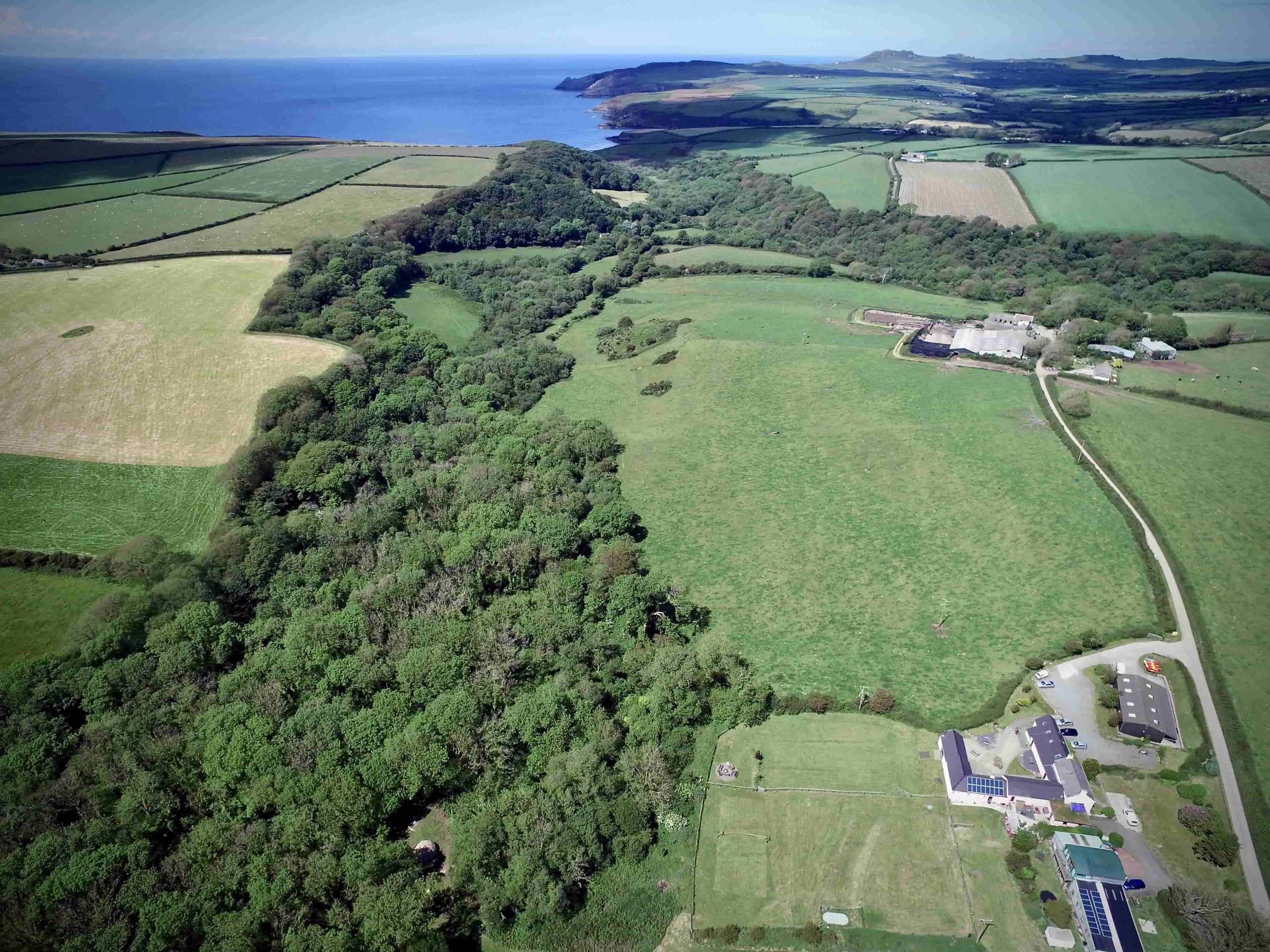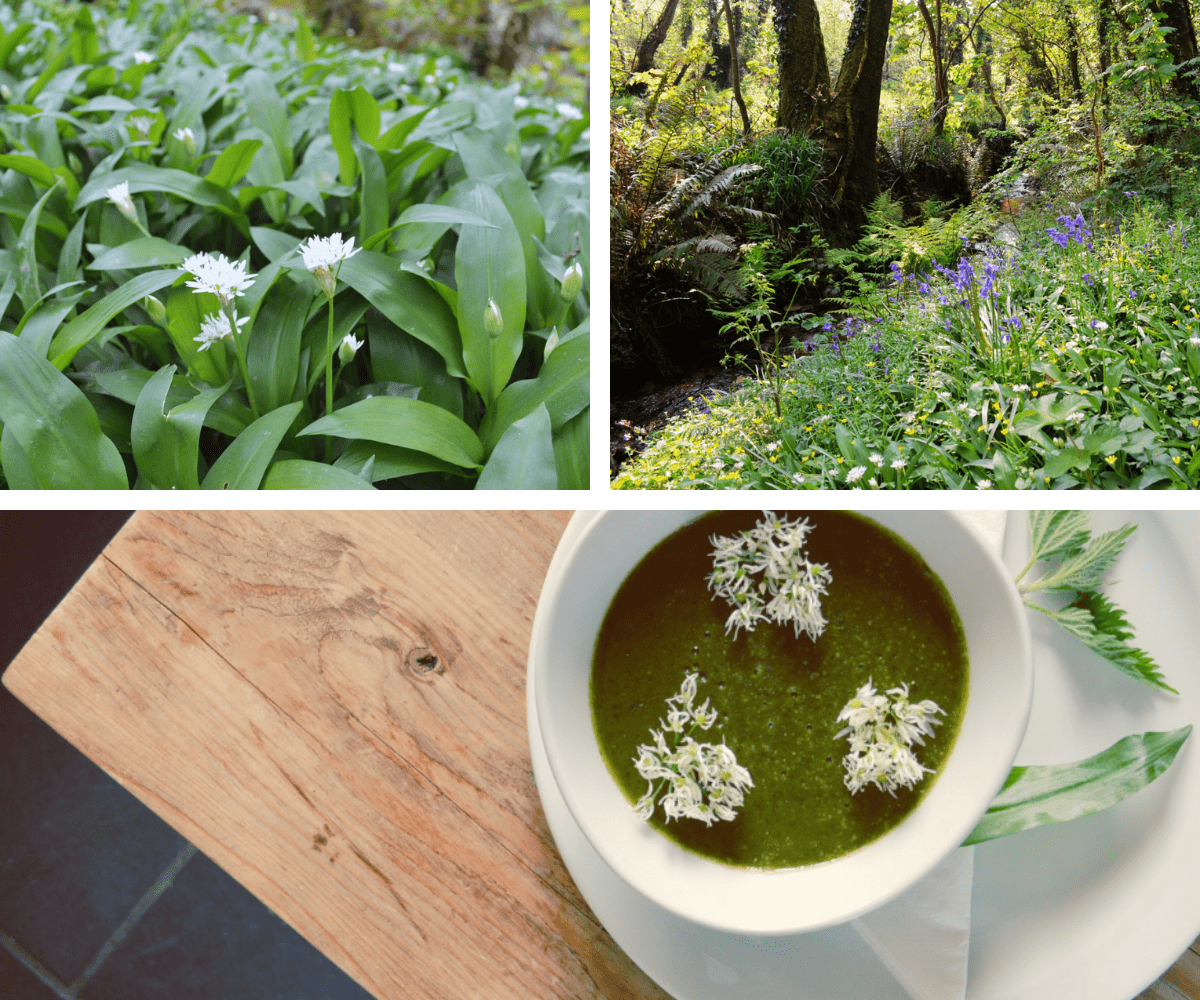
Recipes from the Eco Lodge: Wild Garlic and Nettle Soup
As the days lengthen and the swallows and sand-martins begin to return to bright blue skies here in Pembrokeshire, our iconic puffin colonies are busy again nesting in huge numbers on the offshore islands, gannets are diving for fish amongst the clean Spring swells, and warm sunshine wakes up swathes of coastal flowers across the clifftops. Meanwhile, in the lush, shady, wooded valleys of Pembrokeshire, another magical transformation is taking place! The familiar fragrance of wild garlic permeates the damp forest air as this pungent perennial plant appears, first poking out from the earth as little emerald-green spears, then in patches of young pointed leaves, before copiously carpeting the forest floor between old gnarly trunks and bristly new saplings and bursting into flowering maturity!

Local foragers flock to our local woodland in the Abermawr valley between March and June, assured of a plentiful harvest. It’s a short walk from the eco lodge and a pleasant passage to a wild and expansive remote beach called Abermawr. Having this on our doorstep is really quite special and we never quite get used to the breath-taking view as you emerge from an opening in the trees right onto the rugged Northern coastline!
The Abermawr woodland is truly enchanting in the Springtime. The landscape seems to leap from the pages of fairy-tales and folklore, capturing the imagination of all who pass through. The sunshine filters through the newly budding oaks and weaves its way lazily through twisting branches to softly dapple the fertile forest floor, ferociously abundant with wild garlic and punctuated by patches of primrose and the first-flowering bluebells. The heady redolence of the wild garlic is almost intoxicating on a warm day. But, enlivened by the radiant hues of green and dancing in between the nettles (which Rob picks unflinchingly gloveless with his chef’s hands!), we gratefully pick bountiful bunches of this wondrous herb for Rob’s freshly-foraged and fully flavourful wild garlic and nettle soup.
Connecting us to the Landscape
Food is a powerful means of connecting people to a place. This is part of the reason we use fresh local produce in the eco lodge kitchen, especially supporting local growers who use regenerative and organic farming methods. Foraging from our local woodland feels like the perfect way to situate our guests in the landscape. Rob loves to add seasonality to his menus, and wild garlic soup is certainly a Spring favourite.




Exploring the Abermawr Woodland
We weave this special place into all of our holidays. Linking walkers to the Pembrokeshire Coast Path on a Self-Guided Walking Holiday and offering a playground of endless possibility and adventure for families taking part in an orienteering quest called the “Abermawr Challenge” on our Family Adventure Holiday! It offers a beautiful trail for runners on our Wild Fitness retreats, a backdrop of tranquility for yogis on our Adult Adventure Holiday, and creates an ampitheatre of birdsong for our geodesic dome dwellers!

Foraged Wild Garlic and Nettle Soup Recipe
This is a surprisingly delicate Spring soup carrying the rich, earthiness of nettle tops, the buttery smoothness of Pembrokeshire New Potatoes and the potent, aromatic punch of wild garlic leaves.
Densely nutritional and verdant, this super-food soup contains a huge spectrum of vitamins, minerals and antioxidants. The star green ingredients are anti-inflammatory, anti-fungal, anti-bacterial, anti-viral and detoxifying (wow!). Even the children on our Easter family holiday lapped up generous helpings of this one, so it could become a family favourite in many households!
This recipe feeds two hungry foragers.
Ingredients
- 125g wild garlic leaves (washed and roughly chopped or whole)
- 75-100g young nettle leaves
- 1 whole onion (diced)
- 2 medium-size garlic (crushed)
- 4-5 Pembrokeshire New Potatoes or your local “earlies” or 1 medium-size potato (diced)
- 1 bay leaf
- 4 whole peppercorns
- 1 teaspoon of sea salt
- 350ml vegetable stock
Method
- In a heavy-based soup pot, heat some good quality cold-pressed oil (we used local rapeseed oil) and fry the onions until they are translucent.
- Add your crushed garlic cloves, bay leaf and peppercorns along with the diced potatoes, and give it a good vigorous stir. Fry for a further 5 minutes.
- Add the nettle leaves whole and half of the wild garlic leaves (saving half for later on).
- Pour in the stock and let it simmer until the potatoes are soft.
- Now stir in the second half of the garlic leaves and cook only for a few minutes longer (3-5 should do it, any longer and you may lose the lovely vibrant green colour).
- Blitz your soup in a food processor or use a hand blender until smooth.
- Serve with croutons, or perhaps a drizzle of fresh cream and garnish with a few wild garlic flowers if any managed to find their way into your foraging basket!

Foraging Tips
Wild Garlic
Best in late March and April when the leaves are young and vibrant green, but still available through May and June past flowering. Cut the leaves at the stem with a penknife or pick gently with your fingers, being careful not to unearth the plant and, importantly, leaving the bulb intact underground from which the plant can regrow again next year!
Nettles
Nettles are best picked in the early Spring when the leaves are young, but you can also collect nettle tops (young leaves and buds from the top of the plant) later in the Spring. Use rubber gloves for picking unless you’re experienced in the art of “nettle pinching”! Once wilted or cooked, the sting is no longer effective.
How to Forage Responsibly
Always make sure you can positively identify the plant before you pick it – if unsure, pocket guidebooks and plant identification apps can be helpful but the very best way is to go for a walk with someone who knows the plant you’re looking for!
Here are a few general guidelines all foragers should be aware of:
- Always seek permission before foraging. In some areas, plant species are protected so do your research before gathering and double-check with the landowner or the organisation that maintains the land, such as the National Trust or National Parks.
- Only ever pick from places that have an obviously plentiful supply, i.e. where the plant seems very well established and abundant. Collect only a small amount for personal use and collect a little here and there rather than stripping one patch.
- Always leave plenty for wildlife – every plant in nature is either a habitat or a valuable food source or both! Avoid disturbing wildlife or damaging habitats whilst picking.
- Britain’s wild plants are all protected under the Wildlife and Countryside Act (1981), which makes it illegal to dig up or remove a plant. Check the law before you forage or if in doubt, why not take part in a foraging class with an expert and learn the basics.
Happy foraging!
